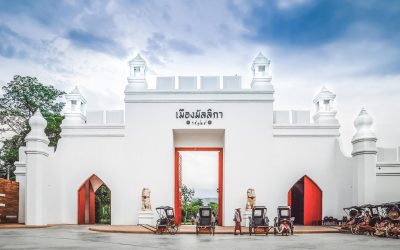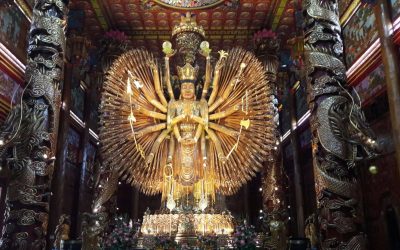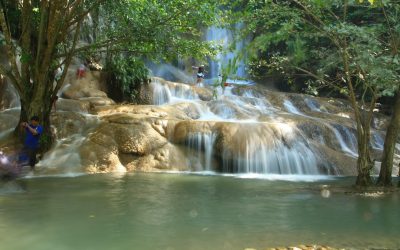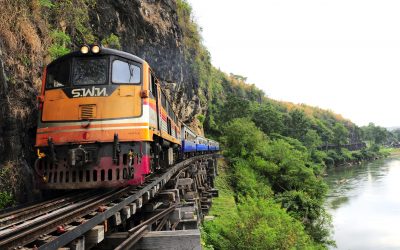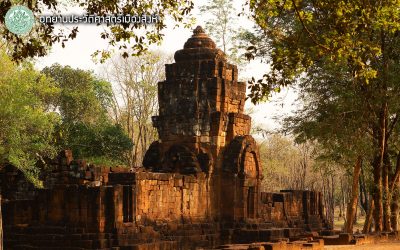Mueang Mallika, R.S. 124 (Rattanakosin Era 124):
Mueang Mallika represents a glimpse into the bygone era of Siamese life along the Chao Phraya River basin during the reign of King Rama IV. During the reign of King Rama V, in the Rattanakosin Era 124, significant transformations occurred in the way of life of the Siamese people. One notable change was the proclamation of the abolition of slavery
Wat Metta Dhamma Bodhiyan
A Chinese Buddhist temple, is a popular destination for tourists who come to visit and participate in religious activities, especially at the shrine dedicated to make offerings and pray for blessings. The temple complex includes a museum featuring carvings of more than 100 different pagodas, with the prominent one being the 12-meter-tall wooden carving of Goddess Guan Im Pang Pan. Currently, the temple is undergoing the construction of a shrine for Goddess Guan Im Pang Pan, and a large Buddha statue for merit-making is also present.
Saiyok Noi Waterfall
Saiyok Noi Waterfall, also known as Khao Phang Waterfall Located in the Saiyok District and is part of the Saiyok National Park. It is a single-tiered waterfall with a long-standing reputation. Originating from mountain springs, the water flows through small streams before cascading down limestone cliffs, spreading across the sloping hillsides. The area is shaded by various types of trees, creating a picturesque atmosphere.
ทางรถไฟสายมรณะ
The Death Railway was created from an agreement between Thailand and Japan. Believed to be based on the memory of the Thais' submission, Japanese troops issued an ultimatum to travel through Thailand to Malaya and Burma, which at that time were under British occupation.
อุทยานปราสาทเมืองสิงห์
Mueang Sing Historical Park is located on the bank of the Kwai Noi River in Sing Subdistrict, Sai Yok District, Kanchanaburi Province. Prasat Mueang Sing This was built as a Buddhist temple in the Mahayana sect of Buddhism, which has architecture and sculptures similar to those of King Jayavarman VII, the Khmer castle-building king.

